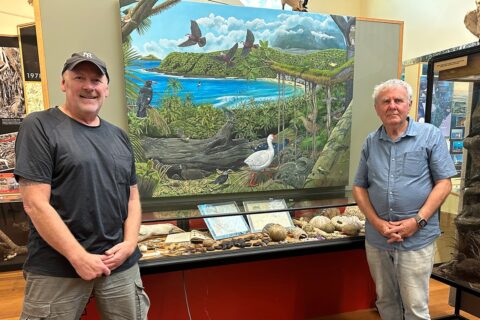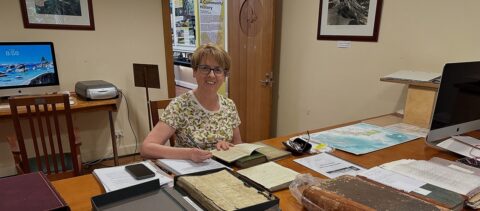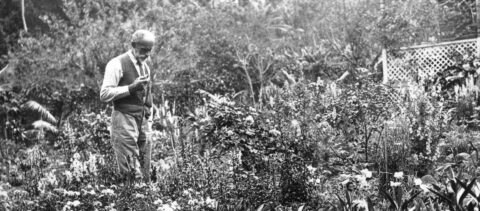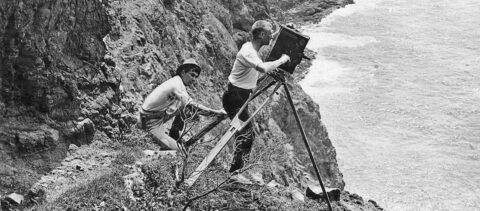Celebrations with Army and Navy personnel
During the week beginning 9th September, there were celebrations on the Island to mark the completion of the Lord Howe Island airstrip in 1974.
Around fifty Australian Army and Navy members, with family members, who were part of the project, visited to mark the Anniversary. Several events were held at the public hall and a walk on the airstrip.
On 13th September the Lord Howe Island Historical Society welcomed the visitors at the Museum, to meet members and view displays prepared for the event. President Hayden King made a short welcome speech, and the visiting Army personnel presented the Museum with a plaque designed and manufactured to mark the event, and a booklet with photographs and details of the Navy involvement.
Replacing the flying boats
When researching our archives, we discovered that the first mention of an airstrip for Lord Howe Island was in the Signal newspaper of November 1955 — the local committee had held a meeting to gain public support.
Over the next few decades, there were studies, meetings, proposals, and costings, moving towards constructing an airstrip for the island. Several sites were investigated — one was to build from Ned’s Beach through Stevens Reserve to the beach opposite the museum today!
The original transport to and from the island was of course by ship. After World War II, flying boats brought people to the island. The flying boats were expensive to operate and on the mainland land aircraft developed rapidly and many airstrips were built around the country.
As the flying boats were aging, and being damaged in storms, talk of the airstrip became urgent. In October 1970 there was an announcement the Commonwealth would fund 75% of the cost of the airstrip construction. In February 1973 the general manager of NSW Airlines, P. Steadman, announced that the flying boat service would cease later that year. This accelerated the proposal and the Australian Army was contracted to undertake the construction in the area previously known as Mosely Park Swamp.
Mosely Park — then and now…


Constructing the new airstrip
On Sunday, March 3rd 1974 three Navy Heavy Landing Craft vessels arrived with 400 tonnes of heavy equipment and plant. On the 4th and 5th of March, the first contingent of 61 army personnel arrived via flying boats. Captain Tony Coyle was in command of the construction detachment, Lieutenant Gary Springhall was the Administrative Officer, Lieutenant Gary Barker was the Survey Officer and W/O Terry Melville the Plant Supervisor. The Army were accommodated at Leanda Lei Lodge which was used exclusively by the Army for the duration of the project.
There were not too many environmental regulations, and it took just six months to complete the project. To acquire rocks to build the seawall into the lagoon (to achieve the required length of the airstrip), a road was constructed to Little Island and large basalt boulders were collected and transported to the site.
The first aircraft to land on the airstrip was a RAAF Caribou which flew in atrocious weather to evacuate Wally Wilson who had an accident with a chainsaw. All the Island residents were there to watch. The last flying boat service was on 10th September 1974 after which small commuter aircraft began the air services to the Island. In 1989 Dash 8 aircraft began the service, first under Norfolk Island Airlines, then Qantas.
Some statistics
- More than 61,000 cubic yards of material were removed from the strip site.
- 101,000 cubic yards of suitable material was carted from “Kirribilli Hill” and spread on the airstrip site.
- Each army truck carried 5 cubic yards of material.
- Hundreds of tonnes of rock were stockpiled at Little Island and 4,500 cubic yards were transported to the site of the wall into the lagoon.
A vote of thanks
Many friendships were made, and at the time and right up until now, the Lord Howe Island community is very appreciative of the effort of those involved fifty years ago.






